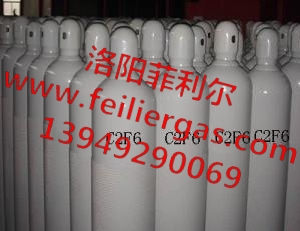Sulfur hexafluoride manufacturers introduce sulfur hexafluoride wet recovery treatment
Published on:2018-07-08 Click:466There are two methods for recovery and purification of sulfur hexafluoride: dry and wet. Today, sulfur hexafluoride manufacturers will talk about wet treatment.
The mixed gas containing sulfur hexafluoride and its decomposition gas in the electrical equipment is similar to the impurity composition of the crude sulfur hexafluoride gas after the fluorine sulfur reactor in production. Therefore, the sulfur hexafluoride manufacturer suggests that the purification and purification method of the crude sulfur hexafluoride can be used for its recovery and treatment.
1. S2Fl0 and S2Fl0 contained in pyrolysis sulfur hexafluoride decomposition gas are highly toxic substances. Even if the content is extremely low, if they leak out, they can also cause poisoning accidents, and they must be removed first. By means of pyrolysis, S2Fl0 is decomposed into SF6 and SF4 at about 350 ℃, and the latter can be removed in the water washing process.
As the SF6 decomposition gas contains HF, as mentioned earlier, HF is highly corrosive during heating. Carbon steel or stainless steel cannot be used when the pyrolysis furnace material is selected, and nickel or copper is preferred for * * *.
2. When washing, wash with water first and then with alkali. Water washing can remove SF4, SF2 and SOF4. The sulfur hexafluoride manufacturer said that the reason for adopting this method is that alkali washing can remove SO2, SO2, SO2, etc. that cannot be removed by water washing. The alkali solution used for alkali washing is generally NaOH or KOH solution, and the mass fraction (the same below) of 10%~20% KOH solution is preferred.
3. When the humidity is high, the adsorption performance of activated silica gel is better than that of activated alumina and molecular sieve. The sulfur hexafluoride manufacturer recommends using coarse porous spherical activated silica gel, which has low adsorption resistance and is not easy to stick. The activated alumina should also be spherical, with the particle size of 3~7mm, and the temperature at the population of its adsorption layer is generally 0~20 ℃.
Then molecular sieve is used for drying and absorption. Molecular sieve has a strong absorption capacity under the condition of low partial pressure of water vapor, and can be used for deep drying of gas (moisture content can be as low as 0.1 × 10-6 mg/kg)。 The adsorption capacity of molecular sieve for gas at higher temperature and linear velocity is better than that of activated silica gel and activated alumina.
The factors that affect the drying and adsorption effect include the initial water content of the gas, the height of the adsorbent bed, the adsorption temperature, the gas flow rate, the air inlet pressure, the type, specification and regeneration degree of the adsorbent. The drying and adsorption process flow, process parameters and equipment are reasonably designed according to the actual situation.
4. High purity sulfur hexafluoride is solidified at about - 80 ℃ by pressure freezing, and non condensable gases such as air are pumped out, and a certain degree of vacuum is maintained, so that the gas solid separation is complete. If you want to obtain SF6 gas with higher purity, you can use low temperature distillation to further remove some impurity gases whose boiling points differ greatly from those of SF6.
The content of the article comes from the recovery and purification of sulfur hexafluoride: http://www.feiliergas.com





